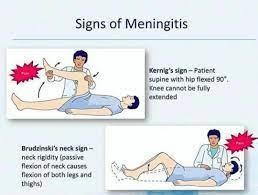Which type of epileptic seizure is characterized by a sudden lapse of consciousness for 5 to 30 seconds?
Petit mal seizure
Clonic seizure
Tonic-clonic seizure
Tonic seizure
The Correct Answer is A
Choice A rationale: Petit mal seizures, also known as absence seizures, involve a sudden lapse in consciousness for a brief duration, typically 5 to 30 seconds.
Choice B rationale: Clonic seizures involve rhythmic jerking movements.
Choice C rationale: Tonic-clonic seizures involve both tonic (muscle stiffness) and clonic (rhythmic jerking) phases.
Choice D rationale: Tonic seizures involve muscle stiffness but don't usually present as sudden lapses of consciousness in a short duration.
 |
Nursing Test Bank
Naxlex Comprehensive Predictor Exams
Related Questions
Correct Answer is A
Explanation
Choice A rationale: With type 2 diabetes, insulin secretion is decreased, and insulin resistance is increased. This means that the pancreas does not produce enough insulin, and the cells of the body do not respond well to the insulin that is available. Insulin is a hormone that helps the body use glucose (sugar) for energy. Without enough insulin or with insulin resistance, glucose builds up in the blood, leading to high blood sugar levels and various complications.
Choice B rationale: This statement describes Type 1 diabetes, where the immune system destroys insulin-producing cells.
Choice C rationale: This describes type 1 diabetes, not type 2 diabetes. People with type 2 diabetes may or may not need to take insulin, depending on how well they can control their blood sugar levels with diet, exercise, and oral medications.
Choice D rationale: This refers to pancreatitis, which is a condition where the pancreas becomes inflamed due to infection, injury, or alcohol abuse. Pancreatitis can cause
severe abdominal pain, nausea, vomiting, fever, and elevated levels of pancreatic enzymes in the blood.
Correct Answer is B
Explanation
Choice A rationale: This is a positive Trousseau's sign, which indicates hypocalcemia or tetany. It is not related to meningitis or meningeal irritation.
Choice B rationale: Kernig's sign is indicated when there is resistance and pain with knee extension and hip flexion, suggesting meningeal irritation.
Choice C rationale: This is a positive Homan's sign, which indicates deep vein thrombosis or phlebitis. It is not related to meningitis or meningeal irritation.
Choice D rationale: This is a sign of nuchal rigidity, which indicates meningeal irritation, but it is not specific to Kernig's sign. Nuchal rigidity can also be caused by other conditions such as cervical arthritis or muscle spasm.

Whether you are a student looking to ace your exams or a practicing nurse seeking to enhance your expertise , our nursing education contents will empower you with the confidence and competence to make a difference in the lives of patients and become a respected leader in the healthcare field.
Visit Naxlex, invest in your future and unlock endless possibilities with our unparalleled nursing education contents today
Report Wrong Answer on the Current Question
Do you disagree with the answer? If yes, what is your expected answer? Explain.
Kindly be descriptive with the issue you are facing.
